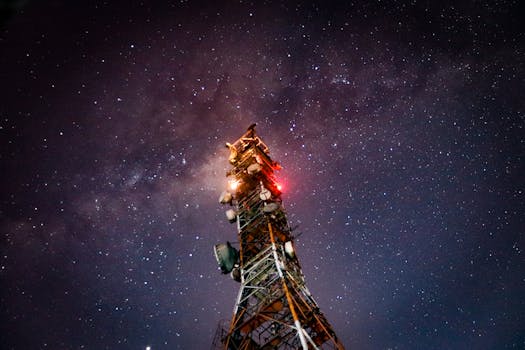
MEO Satellites: Revolutionizing Global Connectivity with Medium Earth Orbit Technology
MEO satellites, or Medium Earth Orbit satellites, are a type of satellite that operates in an orbit between 2,000 and 36,000 kilometers above the Earth’s surface. This orbit is significantly lower than the Geostationary Orbit (GEO) used by traditional satellites, which are parked at an altitude of approximately 36,000 kilometers. The MEO orbit allows for faster and more reliable communications, making it an attractive option for a wide range of applications, including satellite communications, navigation, and Earth observation.
The use of MEO satellites is becoming increasingly popular due to their ability to provide global coverage with fewer satellites than traditional GEO systems. This is because MEO satellites have a larger footprint on the Earth’s surface, allowing them to cover a wider area with a single satellite. Additionally, MEO satellites have a lower latency than GEO satellites, which means that data can be transmitted and received more quickly. This makes MEO satellites particularly well-suited for applications that require real-time communication, such as video conferencing, online gaming, and remote healthcare.
How MEO Satellites Work
MEO satellites work by transmitting and receiving data to and from Earth stations, which are located on the ground. The satellites use a combination of antennas and transponders to receive and retransmit signals, allowing data to be transmitted between different locations on the Earth’s surface. The satellites are typically equipped with multiple beams, which allow them to communicate with multiple Earth stations simultaneously. This enables MEO satellites to provide a high level of connectivity and redundancy, making them a reliable option for critical communications applications.
The MEO orbit is also home to a number of other satellite systems, including the Global Positioning System (GPS) and the Galileo navigation system. These systems use a constellation of satellites in MEO to provide location information and timing signals to receivers on the ground. The use of MEO satellites for navigation has revolutionized the way we travel, allowing for accurate and reliable positioning and timing information to be available anywhere in the world.
Advantages of MEO Satellites
There are several advantages to using MEO satellites, including their ability to provide global coverage with fewer satellites than traditional GEO systems. This makes MEO satellites a more cost-effective option for many applications, as fewer satellites are required to provide the same level of coverage. Additionally, MEO satellites have a lower latency than GEO satellites, which makes them better suited for applications that require real-time communication.
MEO satellites also offer a higher level of redundancy than GEO satellites, as they can be configured to provide multiple paths for data transmission. This makes them a more reliable option for critical communications applications, such as emergency response and disaster recovery. Furthermore, MEO satellites can be used to provide connectivity to remote or underserved areas, where traditional communication infrastructure may not be available.
Challenges and Future Developments
Despite the many advantages of MEO satellites, there are also several challenges associated with their use. One of the main challenges is the need for a large number of satellites to provide global coverage, which can be costly and complex to deploy and maintain. Additionally, MEO satellites are subject to interference from other satellite systems and terrestrial networks, which can impact their performance and reliability.
However, researchers and manufacturers are working to address these challenges and develop new technologies that can improve the performance and efficiency of MEO satellites. For example, the development of advanced propulsion systems and more efficient power sources is enabling the creation of smaller and more maneuverable satellites that can be used for a wide range of applications. Additionally, the use of artificial intelligence and machine learning is being explored to improve the operation and maintenance of MEO satellites, allowing for more efficient and autonomous systems.
In conclusion, MEO satellites are revolutionizing the way we communicate globally, offering faster and more reliable connections than traditional GEO satellites. With their ability to provide global coverage with fewer satellites, lower latency, and higher redundancy, MEO satellites are an attractive option for a wide range of applications, including satellite communications, navigation, and Earth observation. As the technology continues to evolve and improve, we can expect to see even more innovative uses of MEO satellites in the future.



